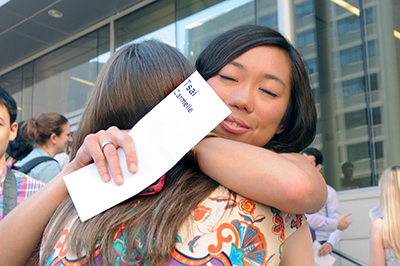In case you missed it: Opening the McNair Campus, HIV research and more
 Between all the excitement of this week’s holidays, time with family, big meals and excitement we’re thrilled to have you join us at Momentum this weekend. Like every Saturday, we recap health, science and research news you may have missed, especially during a busy week like this one.
Between all the excitement of this week’s holidays, time with family, big meals and excitement we’re thrilled to have you join us at Momentum this weekend. Like every Saturday, we recap health, science and research news you may have missed, especially during a busy week like this one.
Baylor College of Medicine Medical Center opens doors
Before Thanksgiving and Hanukkah, the College celebrated Wednesday the opening of the Baylor College of Medicine Medical Center on the McNair Campus.
Gastroenterology, Orthopedics, Physical Medicine and Rehabilitation, and most of the Urology clinics have moved from Baylor Clinic (6620 Main St.) to the 10th floor of the new Medical Center at 7200 Cambridge.
Read more about the McNair Campus opening.
Get an inside look of the medical center with this slideshow.
Building a helping hand
This week the NPR Shots blog highlights work being done by our friends in the Oshman Engineering Design Kitchen at Rice University. Three engineering undergraduate students have helped 17-year-old Dee Faught, a young man with osteogenesis imperfect, also known as brittle bone disease.
The disorder has confined Faught to a wheelchair and keeps him from doing tasks we all may take for granted, things like turning on a light switch or picking up a towel off the floor.
The students created a robotic arm, which attached to Faught’s wheelchair, for approximately $800. (The blog notes that it can cost “tens of thousands of dollars” to purchase a robotic arm.)
“This has definitely refined the engineering I want to do,” Sergio Gonzalez told the blog. “Because it’s an engineering focused on helping people.”
Read more about the engineering students and what Faught did when he received the robotic arm.
Antiretroviral treatment and lipodystrophy
In a report published this week in the journal Science Translational Medicine, our researchers find why some patients receiving successful treatment for HIV end up with abnormal fat loss and deposits – a problem call lipodystrophy.
“With antiretroviral treatment, HIV has become a chronic illness, and lipodystrophy and associated metabolic defects have become, long-term, serious complications,” Dr. Ashok Balasubramanyam, professor of medicine – diabetes, endocrinology and metabolism at Baylor, said in a press release.
“It appears that latent or hidden HIV is dangerous not only because it can flare up if treatment is interrupted, but also because it keeps producing toxic signals that make HIV disease (despite the best antiviral treatment) a chronic, metabolically debilitating illness with high risk of diabetes, cardiovascular disease and obesity,” he said. “This adds to the urgent need for a real cure for HIV, i.e., ways of wiping out all traces of HIV even in reservoirs where it currently hides out.”
Balasubramanyam and his researchers found that addressing the mechanisms mediated by Vpr might help HIV patients with the complications of insulin resistance, fatty liver, diabetes and heart disease.



